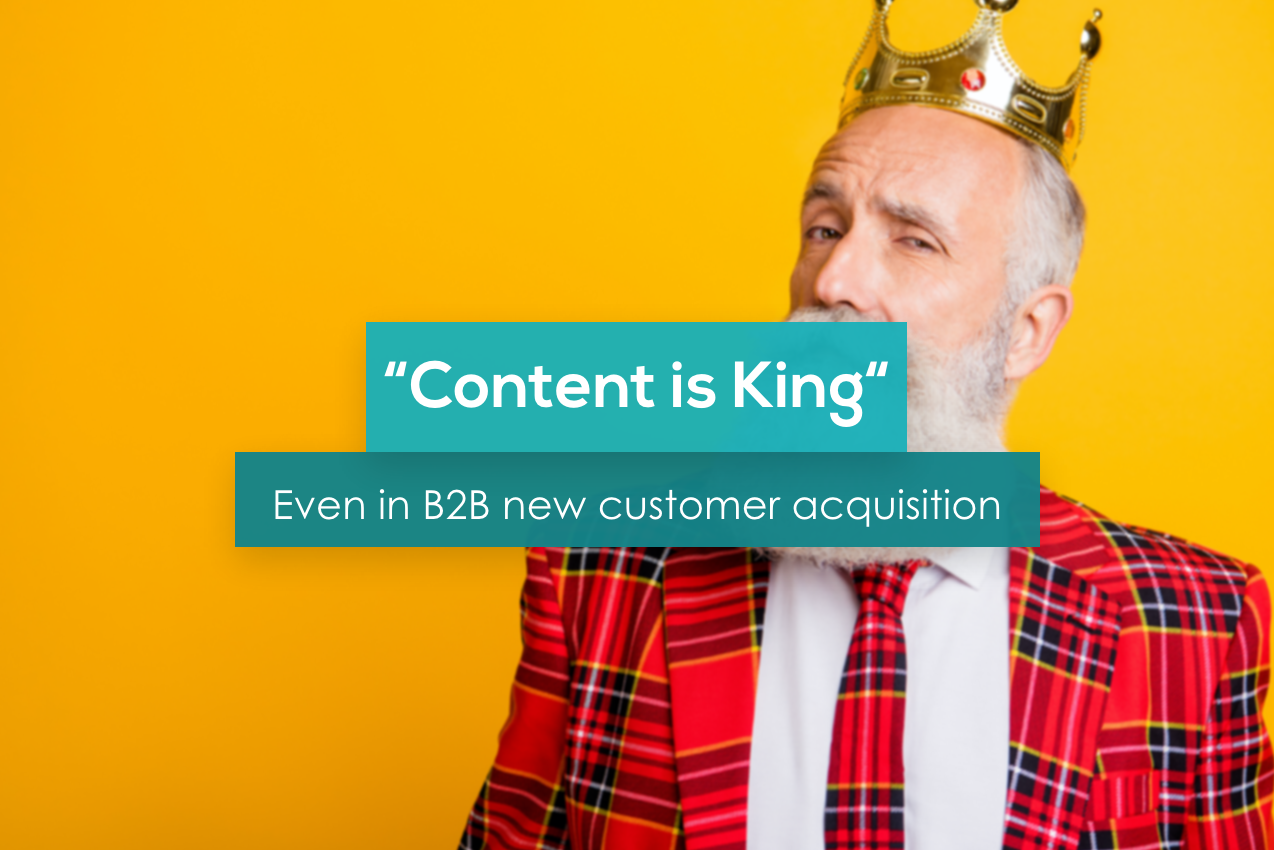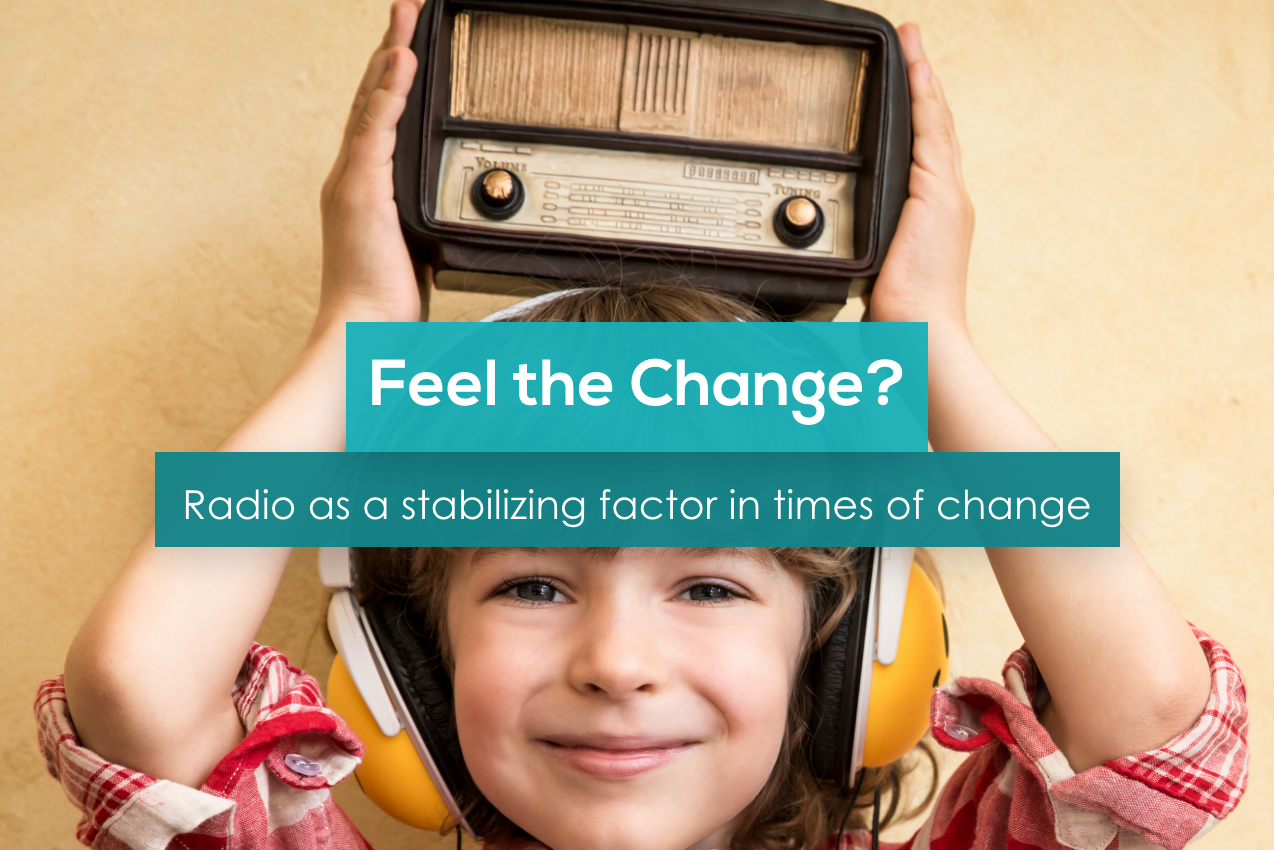© aprile consulting GmbH/stock.adobe.com/#487152199
In March 2020, the doings of our usual business world came to a screeching halt. We all remember too well and shudder, remembering the first hard lockdown in Germany – caused by a virus.
This also had an incredible impact on countless sales departments all over the country. According to the journal SalesExcellent (Issue 1-2 | 2022), almost four million people work in sales in Germany. Until the lockdown, most of them were1 "on the road" around 50 days per year1, thus spending a lot of time out of the office with clients. This stopped overnight. Companies stopped allowing visitors in, and many contacts immediately switched to working from home.1
For 89 percent of those working in external sales, no personal customer meetings were possible whatsover², according to a 2021 survey by Ruhr University in Bochum of 777 managers at B2B companies in the DACH region (Germany, Austria, Switzerland). The lines of communication to existing and new customers threatened to be lost.
As in the entire B2B segment, a rapid response was also needed in the audio industry both on the part of radio stations as well as national marketers. Yet it was revealed that only about one third had even been using digital communication channels such as video calls or online demos, e.g., for product presentations. First and foremost, IT departments were thus put on the spot to purchase PCs, laptops and smartphones with suitable software, particularly for video conferencing. Both at home and at work, everyone was having to deal with "Zoom", "Teams", "GoTo" and more. Apps and programs which for the most part had been available for quite some time. But, until that point, only a minority had been interested in them, at least when they were doing business not across the Atlantic, but rather in the area. Despite providing free use, SMEs in particular did not always find it easy to provide all employees with equipment and accessories right away. Webcams were even often no longer available or could only be purchased at exorbitant prices, and then, once everything had been gotten together, the WLAN capacity of many home offices as well as in many firms was not enough for failure-free online meetings.
Sales and marketing organizations not only had technical problems to deal with at the beginning of 2020. They also had to contend with a greater need to convince and train back-office personnel as well as sales reps. "How does it work?" "What do I do when I lose the connection to my customer in the middle of a conversation or if my kids suddenly walk through the shot?" "I don’t want my bedroom that now also has to serve as my home office to be showcased during a business call. What do I do?" These and similar questions occupy the most experienced sales reps because they had previously been equipped and prepared for all eventualities, from extra battery pack to a spare jacket.
Uncertainties and poor technical equipment are, however, not the most ideal conditions for targeted, relaxed and successful discussions with customers.
Differentiating by customer size
One consolation: Customers in most cases were having to deal with the same things! The cool guy from the ad agency was suddenly no longer lounging in a fancy office, but sitting in his living room with a toddler on his lap because kindergartens and schools as we all know were also closed. And the usual elegant look worn by the head of sales at a furniture retailer could be found at home in a faded favorite t-shirt. Some "surprising" online encounters and some business meetings were quite humorous, not least of all due to persistent technical difficulties. During the year 2020, according to the results of the Ruhr University study, 86.5 percent of all companies then began using video calls, and almost half conducted video calls on smartphones, e.g., via "WhatsApp". Communication via LinkedIn also increased from just under 28 percent to over 44.
The study also showed that international customers in particular, the so-called global accounts, were very willing to accept "online visits". Almost 80 percent fully accept this form of contact to their suppliers. This is closely followed by A customers/key accounts with an acceptance rate of 76 percent. B and C customers seem to be much more skeptical. More than one third of C clients, for example, will not accept video calls, but prefer on-site personal visits. Thus, what initiated by the pandemic because a necessity, namely, the use of digital sales channels, may be an additional opportunity today and in future, but not in all parts of the "buying journey".
Differentiation between new and existing customers
Sales and marketing should differentiate between new and existing customers when it comes to using digital sales communication. Almost three quarters of all those surveyed for the study see good acceptance among existing customers of the following parts of the buying journey:
- Repeat purchases/reorders of a known and familiar product
- Consulting on new products
- Winding up, coordination and problem-solving
- Appointments for negotiations
Direct human contact is imperative in cultivating personal relationships. Digital communications channels make it more difficult to recognize nonverbal signals, such as body position, facial expressions, and gestures. Consequently, even the most longstanding, loyal existing customers should also receive personal visits. Sales departments have to judge by experience how often that makes sense or – even better – find out by asking their contacts. But now, it is not just personal face-to-face meetings and meetings in smaller groups that are again possible, but also trade fairs and conventions as personal touchpoints with customers. Whether invitations to visit the company or to revive customer visits by a team of sales reps – SMEs specifically were able to switch over rapidly again to the familiar "analog" sales channels during the phase following the lockdowns. Still, they should also not rely solely on them, but continue with the digital transformation.
In addressing new customers in the B2B sector, the respective buying journey must be scrutinized and analyzed. It is obvious that many would like to preserve the initial information about a company and its offerings digitally. We are all familiar with the advantages of an online search using a search engine in our private lives. We appreciate the inspiration we draw from social media channels and feed our special interests through electronic newsletters, corporate websites, white papers or chat-bots. All these media and channels are worthwhile online touchpoints for potential new customer even in B2B sales and marketing. The digital paths to getting to know a company, its services and products should be as diverse as possible.
Some will want to keep everything digital, even the entire buying journey from the initial information to the quote, negotiations, conclusion and winding up of the order. However, according to the study, more than half of all new customers still want to be approached, have an initial consultation, negotiate prices, as well as personal contact for a follow-up. Good social skills and a wealth of experience of a good sales team is very valuable for these tasks. Yet digital communications channels can also be used exceedingly well when winding up, organizing and coordinating orders for new customers.
Hybrid sales and marketing is here to stay
The diversity of digital and real-world communications channels referred to as "hybrid sales" has come to stay. "Hybrid Selling" in many ways means a boost of productivity for B2B companies.1.
A quadrupling of the number of customer visits² is feasible if they were to be conducted as video calls instead of on-site visits. According to the calculations of Ruhr University Bochum, this would result in an average increase of 8.5 hours of additional capacity per member of the sales force. This time can be used for better marketing and sales operations and improves the effectiveness and efficiency of a sales team.
Media sales are no exception when it comes to the increasing shortage of skilled workers. Radio broadcasters and marketers are finding it ever more difficult to find and hold on to suitable personnel for sales. This is especially true of the staff out in the field. Using hybrid sales channels, however, parts of the buying journey can be handled even better by back-office personnel or even fully digitally automated. The back-office can also easily take over booking visits to customers online, e.g., to wind up orders or repeat purchases which until recently were still handled by sales reps. Flexibility also increases and thus employee satisfaction which can be achieved by laying the foundation for a better work-life balance by reducing the amount of travel and offering the option remote work.
Primarily C customers in the audio segment
In the radio business, sales have long had to face up to the challenge of supporting numerous small C customers (e.g., the local car dealership). A visit to the location takes just long in preparation, travel time to the site, conversation, the return trip and follow-up as that of a key account. Thanks to hybrid sales, more customer with small volumes can be supported on the one hand, and they on the other hand can also be contacted more frequently and more regularly. The job of sales executives is now to create clear processes for hybrid customer support and introduce the necessary digital applications required for them. A powerful CRM system is just as necessary for this purpose as a functioning video call system that is integrated in the calendar, an email marketing software that allows performance measurement, and in future also AI-based forecasting tools and a sound digital marketing strategy in regard to social media, SEO, websites, content and inbound.
Chances and challenges facing managers
Hybrid selling has many advantages even for audio marketing:
- Greater productivity
- The potential to automate certain work processes
- Greater employee flexibility and thus satisfaction
- Greater customer satisfaction thanks to the possible options of communications channels and reasonable contact rates
- Higher data generation thanks to digital cooperation and thus better knowledge about customers as well as preservation of the basis for forecasting and analysis tools
- Synergies marketing and sales: "Marketing automation, online lead generation and lead nurturing will become the supplier for sales."³
- Last but not least: Cost savings as well as a smaller carbon footprint thanks to the elimination of travel
Challenges and risks arise for managers through the selection of the right systems, the overdue redesign of many work processes and finding a balance between digital and analog communications channels. "Who wants to contact us and how in what phase of the buying journey?" This is a question sales organizations need to ask again and again.
Last, but not least, employees in the back office and in the field as well as in marketing needed to be included on this longer path of hybrid sales. Media consultants will not always gladly do without the freedom of field work on a permanent basis. And not everyone working in the back office prefers video calls to a good old-fashioned phone call. Team spirit, a stronger connection of all work processes, investments, self-reflection as a sales department, continuing education and coaching of staff are the key words. And, naturally, the customer should be the focus of all efforts. And that’s the way it was before Covid-19, too.
Sources:
1Dr. Huckemann, Matthias: Titelbeitrag zur Vertriebsarbeit in der Pandemie, SalesExcellence, Ausgabe 1-2 | 2022, S. 10
²Prof. Dr. Schmitz / Dr. Huckemann: Hybrid Selling: Mehr Vertriebsproduktivität durch synchronisierte Vor-Ort- und Online-Besuche, 2021, Studie der Ruhr-Uni Bochum
³Heintze, Robin: Hybrid-Selling: So sehen Marketing und Vertrieb im Jahr 2022 aus, t3n.de/news, 22.02.2022
Yours, Andrea Anders
Read more about our authors Authors
You might be interested in these posts



